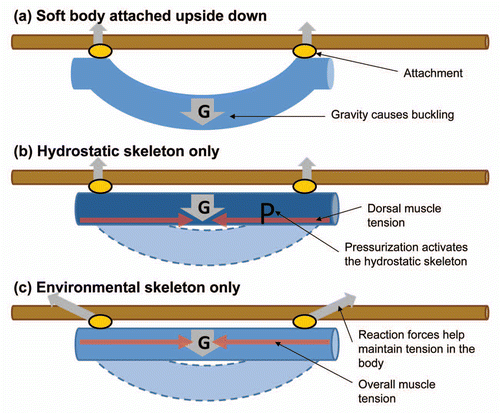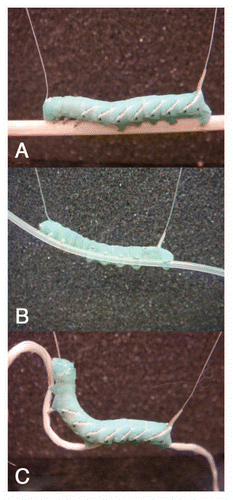Figures & data
Figure 1 Two dominant modes of locomotion in caterpillars: crawling and inching. Some caterpillars with selective proleg reduction develop unique intermediate inch-crawl gaits which will be reported later in a full research article.

Figure 2 A simple scenario illustrates the difference between using hydrostatic skeleton and environmental skeleton for posture control. (A) A doubly supported soft beam will buckle dramatically under the influence of gravity. (B) Pressurization is one way to increase stiffness and therefore maintaining the linear configuration. The buckling side (dorsal) will experience greater tensile stress according to the beam theory. (C) Alternatively, and overall increase of axial tension can straighten the body without pressurization. Yet the substrate needs to withstand substantial compressive load from the animal without buckling.

Figure 3 Substrate stiffness greatly affects the body control of Manduca caterpillars as demonstrated in the suspension experiment. (A) There are no observable kinematics differences when the caterpillar is walking a stiff substrate. (B) Flexible substrate has variable curvature which the caterpillar simply adapts to it. (C) Soft substrate that cannot support bending load nor compression leads to gait confusion in the caterpillar's normal locomotion since the substrate fails to maintain the axial tension in the caterpillar body.
